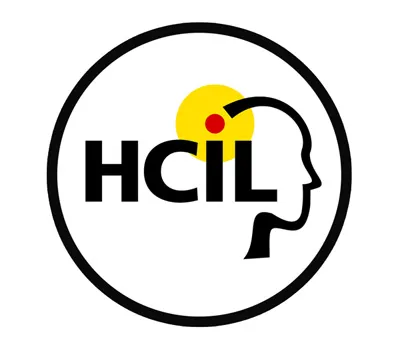
Researchers in the University of Maryland’s Human-Computer Interaction Lab (HCIL) are presenting five papers this week at a leading computer visualization conference in Chicago.
The papers—presented at the Institute of Electrical and Electronics Engineers Visualization (IEEE VIS) conference—highlight HCIL research in developing new visualization tools to help people better understand big data sets, how computers of the future could be controlled by body language, innovative touch or pen-based desktop tools, and more.
Niklas Elmqvist, an associate professor in the College of Information Studies (iSchool) with joint appointments in the University of Maryland Institute for Advanced Computer Studies (UMIACS) and HCIL, is a co-author on all five papers.
“HCIL has a long and distinguished history of leading research in the field of visualization,” he says. “Our strong showing of five paper presentations at VIS 2015 is a testament to the continued success of our visualization research at the University of Maryland.”
Elmqvist collaborated with iSchool doctoral students and Ben Bederson, a professor of computer science who also holds an appointment in UMIACS, on the research.
The papers, to be presented starting today (Oct. 27), are:
- “AggreSet: Rich and Scalable Set Exploration using Visualizations of Element Aggregations” (Adil Yalçin, Niklas Elmqvist and Ben Bederson)- Movies may belong to several genres, recipes may contain many different ingredients, and more. Understanding such patterns becomes challenging as the number and combinations grow. AggreSet aims to help people answer such questions using a visual and interactive approach.
- “MotionFlow: Visual Abstraction and Aggregation of Sequential Patterns in Human Motion Tracking Data” (Sujin Yang, Niklas Elmqvist and Karthik Ramani)- Explores how computers in the future will be increasingly controlled by natural behaviors—speech, gestures, etc. MotionFlow strives to help designers of gesture-based interfaces by creating graphical pictures of movement patterns collected from test participants and grouping them together so common patterns are visible.
- “ThemeDelta: Dynamic Segmentations over Temporal Topic Models” (Samah Gad, Waqas Javed, Sohaib Ghani, Niklas Elmqvist, Tom Ewing, Keith N. Hampton and Naren Ramakrishnan)- There has been progress in trying to remedy the information overload problem society faces through automatic methods called topic modeling where documents are summarized by significant words. However, for document collections that change over time, topics may evolve. ThemeDelta has a topic modeling component that automatically calculates the natural time periods in the document collection and a visualization component that shows how words flow from topic to topic.
- “VisDock: A Toolkit for Cross-Cutting Interactions in Visualization” (Jungu Choi, Deok Gun Park, Yuet Ling Wong, Eli Raymond Fisher and Niklas Elmqvist)- Standard user applications provide a range of cross-cutting interaction techniques common to virtually all such tools: selection, filtering, navigation, layer management, and cut-and-paste. VisDock is a JavaScript mix-in library that provides a core set of these interaction techniques for visualization, including selection, layer management, navigation and annotation.
- “Visualization Beyond the Desktop- The Next Big Thing” (Jonathan C. Roberts, Panagiotis D. Ritsos, Sriram Karthik Badam, Dominique Brodbeck, Jessie Kennedy and Niklas Elmqvist)- Data visualization uses images to help people understand complicated data, but new methods are needed as data continues to grow in size and complexity. This paper describes a plan for taking advantage of new computer technology to improve visualization: touch-based, pen-based, gestural, immersive, and ubiquitous visualization.
Bederson, who worked on the AggreSet project, says he is looking forward to sharing AggreSet with a wider audience.
“Our work on AggreSet is exciting because it makes it possible to visually explore rich data about sets without being an expert analyst,” he says. “I love the idea of making analysis tools that used to be available only for specialists readily accessible to a much broader audience—when more people can answer their own questions, more gets done.”
Adil Yalçin, a sixth-year doctoral student in computer science research techniques in exploratory data analysis, also worked on the AggreSet project.
“AggreSet provides a scalable design solution to explore set-typed data by providing its visualization design to represent abstract data with perceptual effectiveness,” he says. “Its interaction design allows for rapid overview-to-detail exploration of various relationships within set-typed attributes, and across other categorical and numerical attributes.”
IEEE VIS is the premier forum for advances in scientific and information visualization. The conference brings together an international community of researchers and practitioners from academia, government and industry to explore their shared interests in tools, techniques and technology.
HCIL is a partnership between the iSchool and UMIACS. It is one of 16 labs and centers in UMIACS.